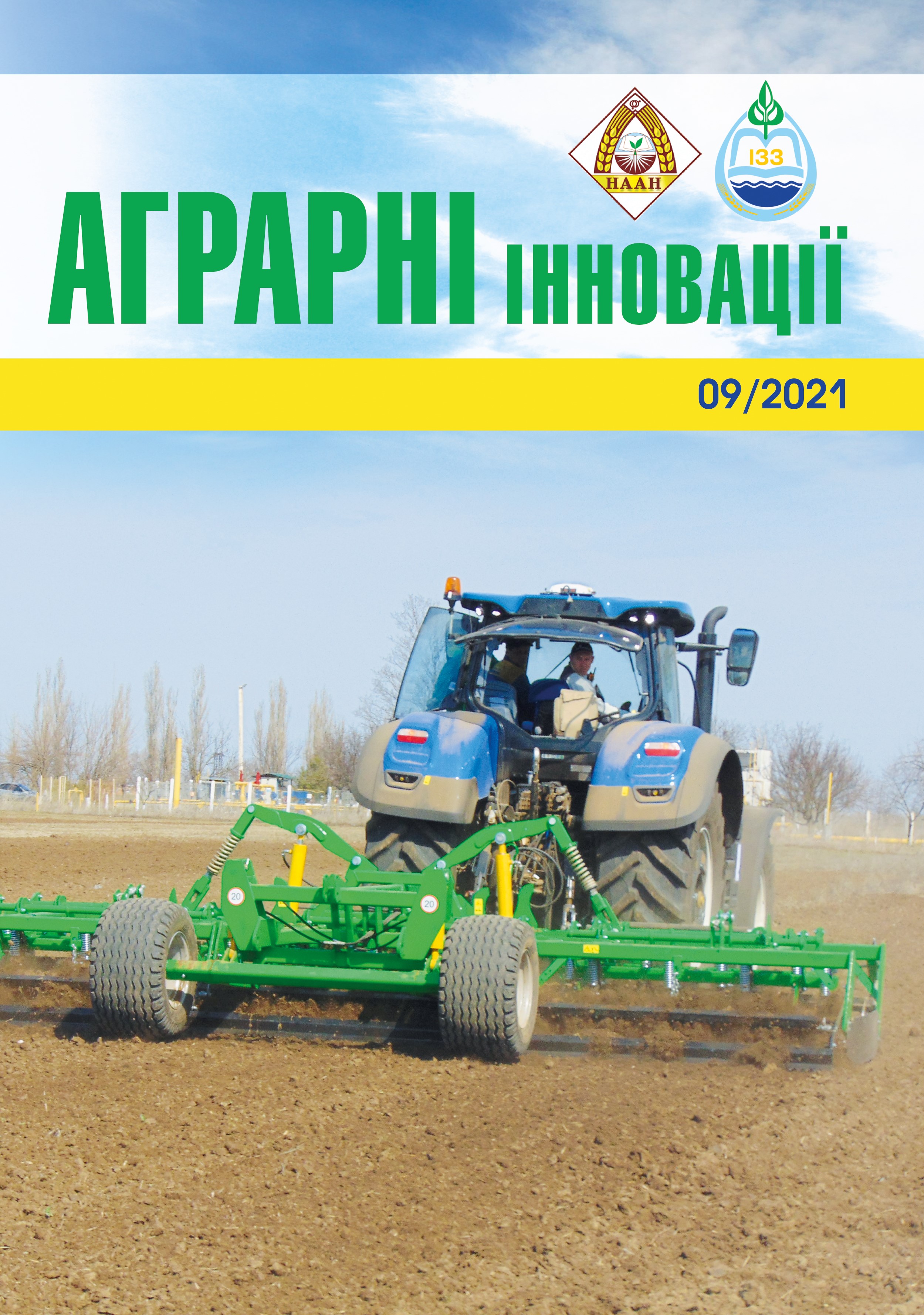Management of hemp plant productivity of narrow-row crops by number of seeds, seeding rate and varietal factor
Abstract
The purpose of research is to establishthe dependence of seed productivity of hemp plants onvariety and differentiated seeding rates.The following methods were used to generalizethe results of research and scientific substantiationof the purpose: general scientific (to determinethe direction of research, planning and bookmarkingthe experiment); special (laboratory – to determinebiometric indicators); mathematical and statistical (forprocessing experimental data).Results. It is established that at increase of seedingrate to 1.8 million pieces / hectare in comparison with rateof 1.2 million pieces / hectare productivity of plants onquantity of seeds decreased by 25.4%, for seeding ratesof seeds of 2.4 million pieces / ha compared to the rateof 1.8 million pieces / ha – by 20.8%, at the seeding rateof 3.0 million pieces / ha compared to the previous rateof 2.4 million pieces / ha – by 16.5% and at seedingrates of 3.6 million pieces / ha less seeds per plant wascompared to the rate of 3.0 million pieces / ha – by 13.0%.It was also found that hemp varieties differed significantly inproductivity in the years of research at all seeding rates, interms of the number of seeds per plant. On the average forfactor B in for three years of researches productivity of hempvarieties by parameters of seeds quantity per 1 plant wasfor varieties: YUSO-31 – 38 pieces, Gliana – 52 piecesand Glesiia – 56 pcs. This also confirms the effectivenessat the level of DNA structure, as a biological factor whichincludes modern varieties of hemp in the managementof seed productivity of plants. Conclusions. The average experiment for factor A inaccordance with the specified seeding rates of 1.2; 1.8; 2.4;3.0 and 3.6 million pieces / ha, the indicators are 74.8; 55.8;44.2; 36.9; 32.1 pieces of seeds per 1 plant. The largestnumber of seeds per 1 plant with a row spacing of 15 cmfor all seeding rates of 1.2 million pieces / ha; 1.8; 2.4;3.0 and 3.6 million pieces / ha were provided by the Glesiiahemp variety, the second most productive Gliana variety,and the lowest productivity was provided by the YUSO-31 hemp variety.
References
2. Вировець В.Г., Баранник В.Г., Гілязетдінов Р.Н. та ін. Коноплі: монографія; за ред. М.Д. Мигаля, В.М. Кабанця. Суми: видавничий будинок «Еллада», 2011. 384 с.
3. Farinon B., Molinari R., Costantini L., Merendino N. The seed of industrial hemp (Cannabis sativa L.): Nutritional Quality and Potential Functionality for Human Health and Nutrition. Nutrients. 2020. 12. Р. 1935. DOI: https://doi.org/10.3390/nu12071935.
4. Karus M.; Vogt D. European hemp industry: Cultivation, processing and product lines. Euphytica. 2004. 140. Р. 7–12. DOI: https://doi.org/10.1007/s10681-004-4810-7.
5. Vera C.L.; Hanks A. Hemp Production in Western Canada. J. Ind. Hemp. 2004. 9. P. 79–86. DOI: https://doi.org/10.1300/J237v09n02_08.
6. Сенченко Г.И., Вировец В.Г., Горшкова Л.М. и др. Создание новых высокопродуктивных сортов однодомной конопли. Биологические особенности, технология возделывания и первичная обработка конопли. Глухов, 1982. Вып. 43. С. 3–12.
7. Лихочвор В.В., Проць Р.Р., Долєжал Я. Ячмінь. Львів: НВФ Українські технології, 2003. 88 с.
8. Доспехов Б.А. Методика полевого опыта. Москва: Агропромиздат, 1985. 351 с.
9. Гораш О.С., Климишена Р.І. Ячмінь: управління пивоварною якістю: монографія. Кам’янець-Подільський: ТОВ «Друкарня Рута», 2020. 260 с.
10. Мигаль М.Д., Конопля К.В., Рухленко В.М. Підвищення насіннєвої продуктивності конопель. Збірник наукових праць ННЦ «Інститут землеробства УААН». К., 2009. Вип. 3. С. 132–143.
11. Голобородько П.А., Коротя К.Я., Ситник В.П. та ін. Технологія вирощування конопель. Конопля. Суми: ВБ «Еллада», 2011. С. 172–215.






